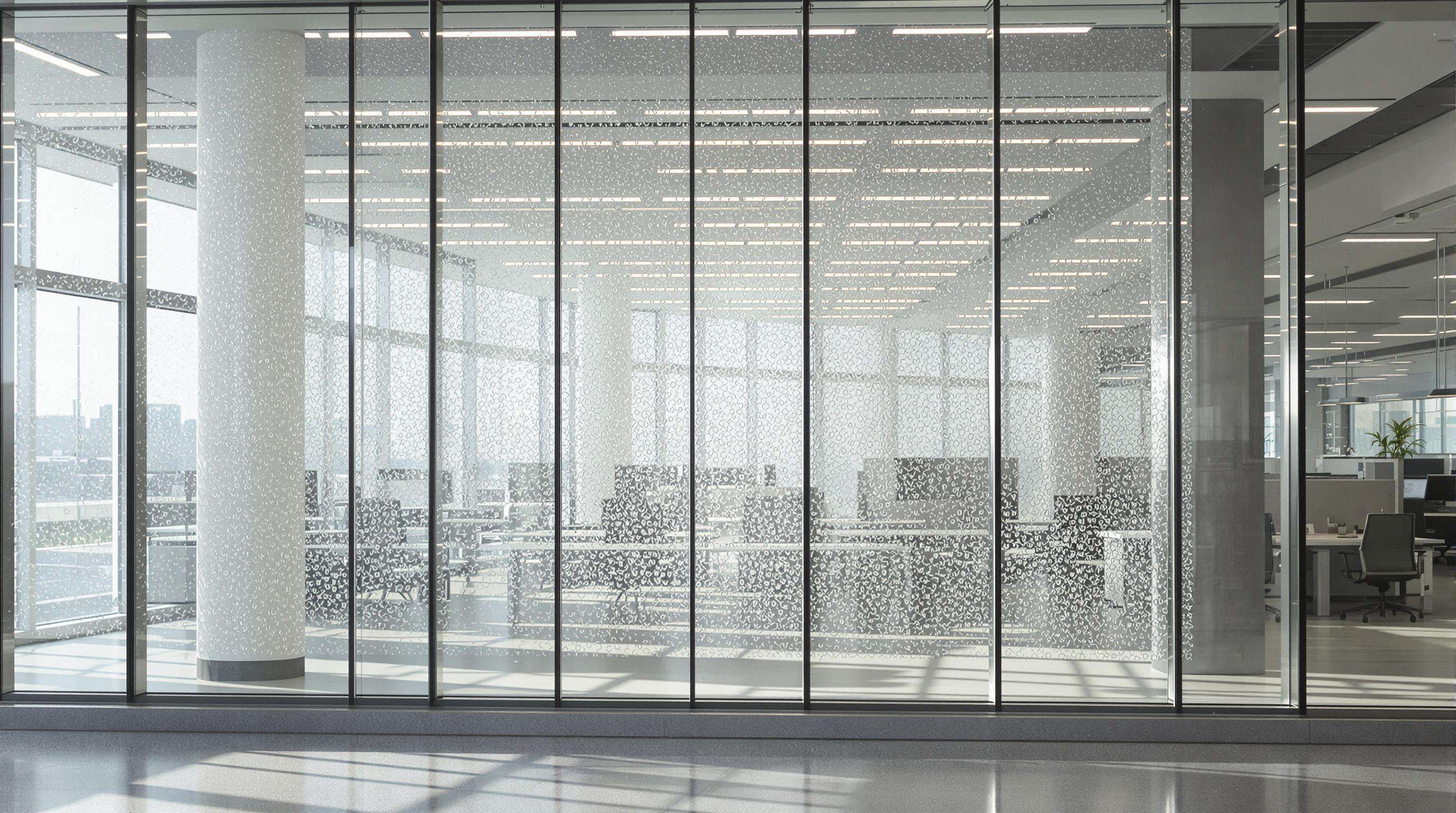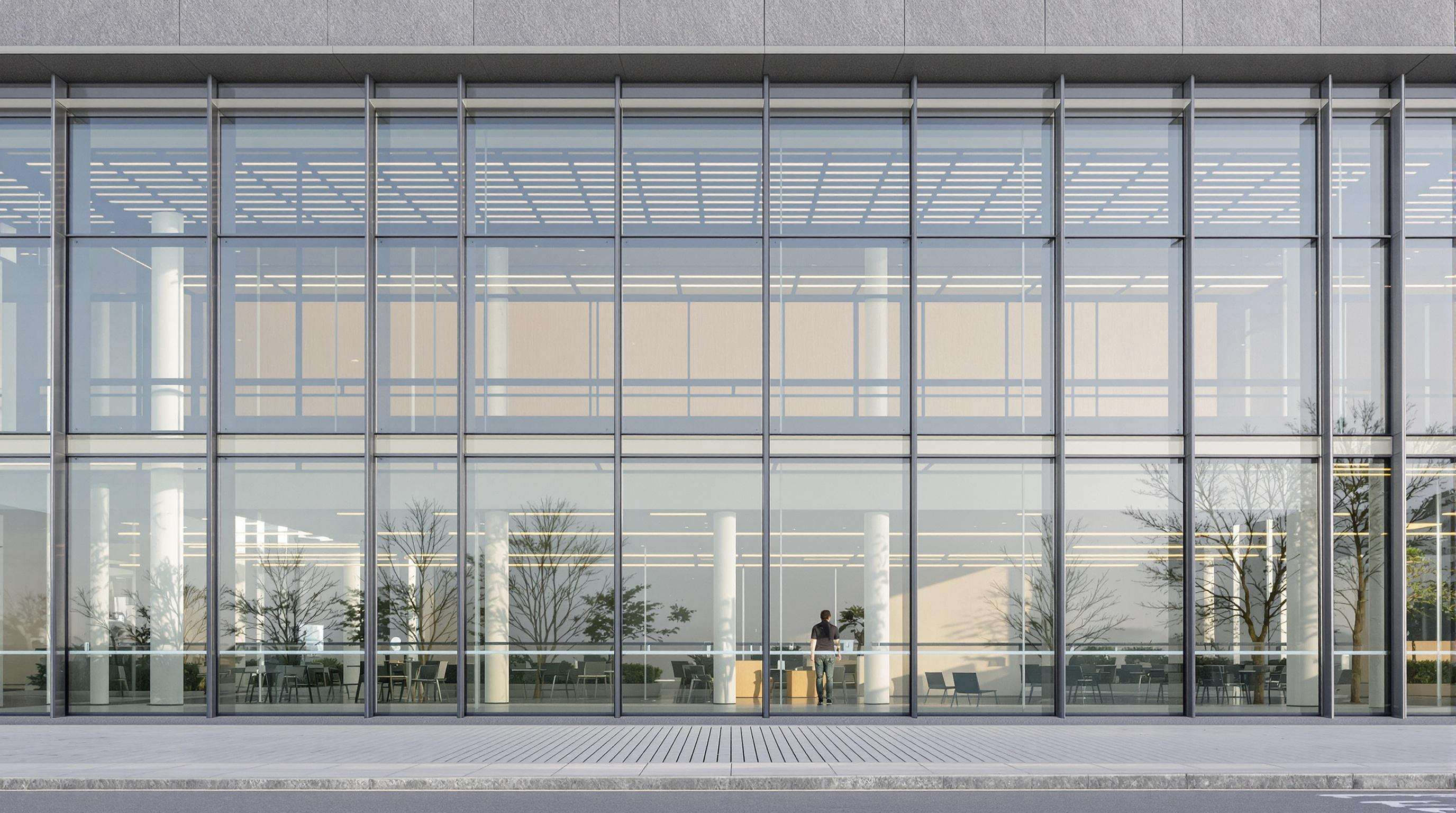Building Integrated Photovoltaics (BIPV) power glass facades started out as just pretty decorations back when they first hit the market in the 90s, but now they're becoming serious energy systems. At first, architects mainly used those solar cells as accents on buildings rather than relying on them for real power generation. Things really changed around 2015 though. That's when improvements in technology allowed these glass BIPV modules to convert sunlight into electricity at rates between 12 to 16 percent, all while still letting through about 30 to 50 percent of visible light according to a recent study published by Frontiers in Sustainable Cities. The latest versions of these systems are actually replacing traditional curtain walls in many buildings today. Some impressive projects across Europe show these modern installations generating around 120 kilowatt hours per square meter each year in office buildings. To put that number into perspective, this amount of power could cover roughly 35 percent of what most buildings need for heating, ventilation, and air conditioning.
Modern BIPV power glass delivers triple-bottom-line advantages:
A 2025 Renewable Energy Reviews analysis found that BIPV retrofits in urban offices achieve 19% faster ROI than standalone solar arrays due to material substitution benefits. The technology also addresses urban heat island effects, with PV-integrated facades demonstrating 3–5°C surface temperature reductions compared to conventional glass in summer conditions.

The semi transparent BIPV power glass facades incorporate either spaced out solar cells or thin film layers, letting about 15 to 40 percent of visible light pass through while still producing electricity. This combination solves what many architects struggle with when designing offices how to keep enough natural light coming in without letting too much heat build up inside. Research published last year in Materials Science looked at these STPV modules with vacuum glazing and found they had a Solar Heat Gain Coefficient ranging between 0.28 and 0.35. That's actually 42 percent better than regular double glazed windows. At the same time, they manage to generate somewhere between 80 and 120 watts per square meter. When architects adjust the density of cells in different parts of the building envelope, they can actually create interesting light patterns that satisfy the EN 17037 requirements for daylighting in areas near the edges of buildings going as far back as six meters from the exterior walls.
Modern STPV systems achieve optimal balance through three key parameters:
Adaptive STPV systems with electrochromic interlayers demonstrate a 68% reduction in blinds usage compared to static solutions, according to a 12-month EU field trial across 15 office buildings.
Performance metrics for STPV facades now combine energy yield with occupant-centric indicators:
| Metric | Benchmark | Measurement Tool |
|---|---|---|
| Daylight Autonomy (DA) | ≥50% in 75% of floor area | Radiance-based simulations |
| Uniformity Ratio | 0.4–0.7 | Lux meters at 0.8m height |
| PV Output Stability | <15% variance across seasons | IoT-enabled microinverters |
A 2024 Building Energy Research paper demonstrates how office blocks with optimized STPV facades achieve 32% higher daylight autonomy than conventional glazing, while maintaining 85% of opaque BIPV's energy generation capacity through intelligent window-to-wall ratio (WWR) adjustments.
When it comes to BIPV power glass facades, they typically hit around 12 to 18 percent solar conversion efficiency when installed vertically. That's actually lower than what we see from rooftop PV systems which usually range between 15 and 22 percent. Why the difference? Well, basically because vertical surfaces just don't catch sunlight at the same angle as horizontal ones. But there's hope! Bifacial modules can help recover almost 19 percent of that lost efficiency by grabbing reflected light bouncing off surrounding buildings. And things are getting even better lately thanks to improvements in cadmium telluride thin film tech. These new developments mean vertical installations are now producing roughly 84 percent of what optimally angled panels would generate in city settings. Pretty impressive progress considering where we started just a few years back.
BIPV facades facing south tend to produce about 14% more energy annually compared to those oriented east or west in Central Europe. However, many contemporary buildings now incorporate panels across multiple directions to smooth out daily power generation fluctuations. Getting shading right from the start is super important too since poor planning can lead to losing around 30% of potential output. Think about it this way: nearby buildings alone might cut down on solar production by anywhere between 18 to 24% in crowded city areas. When it comes to handling different weather conditions, BIPV glass stands out as well. These panels keep working at around 80% efficiency even when sunlight drops to 200 W per square meter, which beats regular silicon panels that typically fall somewhere between 65 and 70% under similar dim conditions.
Research conducted in 2024 looked at 47 office buildings across Europe equipped with BIPV facades and found they produced around 120 kilowatt hours per square meter each year on average. Numbers varied quite a bit though - buildings in northern Scandinavia only managed about 85 kWh/m² while those down south in the Mediterranean hit closer to 158 kWh/m². At the High Tech Campus in Eindhoven, engineers got impressive results too. Their setup generated 1,630 kWh of AC power from just 44 facade modules within five months alone. This success highlights why proper ventilation between panels makes such a difference for consistent energy production. Looking at current trends, almost 38% of all new installations now use bifacial modules. The test site in Roskilde, Denmark provides concrete evidence of this benefit. Ventilated BIPV systems there have been clocking performance ratios of 0.92 versus only 0.85 for similar systems without ventilation.
Designing BIPV power glass facades presents a real challenge for architects who need to find the sweet spot between letting in enough natural light and generating adequate electricity. When buildings have higher transparency rates around 30 to 50 percent in office spaces, they definitely get better daylighting but sacrifice about 15 to 25 percent in PV efficiency compared with regular solid solar panels according to research published in Nature last year. Some interesting findings came out of a parametric model study from 2023 though. The researchers discovered that tweaking facade designs could actually close this efficiency gap by roughly 27 percent. They achieved this by arranging panels strategically to account for how sunlight changes across seasons and still maintain even lighting throughout interior spaces.
Emerging solutions integrate electrochromic glass with micro-tracking photovoltaic cells that adjust transparency (10–70% range) and tilt angles (±15°) in response to real-time weather and occupancy patterns. These systems maintain 80% of baseline energy yield while doubling daylight autonomy in cloudy climates, according to prototype testing in Nordic office environments.
While European office facades with 40% transparency average 120 kWh/m²/year—sufficient for 30–35% of building energy demands—their fully opaque counterparts generate 190 kWh/m²/year. However, advanced optical coatings now enable 60%-transparent modules to achieve 85% of opaque panel yields, narrowing the gap between aesthetic aspirations and net-zero targets.

When building integrated photovoltaic glass facades are combined with double skin facade systems, they form a kind of partnership that actually improves both how much energy gets generated and how buildings handle heat and light. The space between the two layers of glass in these double skin facades works like insulation, cutting down on the heat buildup in solar panels by around 6 to 25 percent depending on where the building is located. Cooler panels mean better electricity production too since each 10 degree Celsius drop in temperature can boost efficiency by about 1 to 2%. A recent study looking at materials performance back in 2024 found that buildings with this combined system in moderate climates produce roughly 12 to 18% more power over the year than just regular BIPV setups alone. For designers wanting to keep their buildings looking modern and clean, this arrangement also gives them an extra space behind the glass that makes maintenance easier and helps control airflow through the building.
Modern BIPV-DSF configurations use adaptive hybrid ventilation strategies to balance solar heat gain and indoor comfort. A 2023 analysis of office towers in Hefei, China, revealed that dynamic airflow management in BIPV-DSF systems reduced cooling loads by 52.2% annually compared to single-skin alternatives. Key innovations include:
Studies show these systems cut energy use intensity (EUI) by around 28 to 34 kWh per square meter each year in mid rise office buildings according to EU Smart Building Standards from 2025. There are still some hurdles though when it comes to getting the right airflow rates for different panel temperatures. But things are looking up thanks to new predictive control algorithms that let buildings make instant adjustments. This means better comfort for people inside while also squeezing out maximum power output at the same time.
BIPV power glass facades are used for both aesthetic purposes and energy generation in buildings. They integrate photovoltaic solar cells into the building materials, providing electricity while maintaining a visually appealing design.
BIPV facades typically have a solar conversion efficiency of 12 to 16 percent when installed vertically, which is lower than traditional rooftop solar panels. However, advancements such as bifacial modules and improved materials have significantly enhanced their efficiency.
BIPV facades contribute to urban sustainability by reducing energy grid dependence, lowering carbon emissions, and providing better thermal regulation. They also mitigate urban heat island effects and offer faster return on investment compared to standalone solar arrays.
Semi-transparent BIPV modules optimize daylight by allowing a percentage of visible light to pass through while generating electricity. By adjusting the density of solar cells, architects can achieve optimal daylight and visual comfort within buildings.
Yes, BIPV facades are affected by weather changes, which can influence their energy yield. Despite this, they generally perform better than regular silicon panels under low sunlight conditions.
 Hot News
Hot News2025-02-25
2024-11-27
2024-12-17